第2章
THE CHATEAU
Les Aigues, August 6, 1823.
To Monsieur Nathan, My dear Nathan,--You, who provide the public with such delightful dreams through the magic of your imagination, are now to follow me while I make you dream a dream of truth.You shall then tell me whether the present century is likely to bequeath such dreams to the Nathans and the Blondets of the year 1923; you shall estimate the distance at which we now are from the days when the Florines of the eighteenth century found, on awaking, a chateau like Les Aigues in the terms of their bargain.
My dear fellow, if you receive this letter in the morning, let your mind travel, as you lie in bed, fifty leagues or thereabouts from Paris, along the great mail road which leads to the confines of Burgundy, and behold two small lodges built of red brick, joined, or separated, by a rail painted green.It was there that the diligence deposited your friend and correspondent.
On either side of this double pavilion grows a quick-set hedge, from which the brambles straggle like stray locks of hair.Here and there a tree shoots boldly up; flowers bloom on the slopes of the wayside ditch, bathing their feet in its green and sluggish water.The hedge at both ends meets and joins two strips of woodland, and the double meadow thus inclosed is doubtless the result of a clearing.
These dusty and deserted lodges give entrance to a magnificent avenue of centennial elms, whose umbrageous heads lean toward each other and form a long and most majestic arbor.The grass grows in this avenue, and only a few wheel-tracks can be seen along its double width of way.
The great age of the trees, the breadth of the avenue, the venerable construction of the lodges, the brown tints of their stone courses, all bespeak an approach to some half-regal residence.
Before reaching this enclosure from the height of an eminence such as we Frenchmen rather conceitedly call a mountain, at the foot of which lies the village of Conches (the last post-house), I had seen the long valley of Aigues, at the farther end of which the mail road turns to follow a straight line into the little sub-prefecture of La Ville-aux-
Fayes, over which, as you know, the nephew of our friend des Lupeaulx lords it.Tall forests lying on the horizon, along vast slopes which skirt a river, command this rich valley, which is framed in the far distance by the mountains of a lesser Switzerland, called the Morvan.
These forests belong to Les Aigues, and to the Marquis de Ronquerolles and the Comte de Soulanges, whose castles and parks and villages, seen in the distance from these heights, give the scene a strong resemblance to the imaginary landscapes of Velvet Breughel.
If these details do not remind you of all the castles in the air you have desired to possess in France you are not worthy to receive the present narrative of an astounded Parisian.At last I have seen a landscape where art is blended with nature in such a way that neither of them spoils the other; the art is natural, and the nature artistic.
I have found the oasis that you and I have dreamed of when reading novels,--nature luxuriant and adorned, rolling lines that are not confused, something wild withal, unkempt, mysterious, not common.Jump that green railing and come on!
When I tried to look up the avenue, which the sun never penetrates except when it rises or when it sets, striping the road like a zebra with its oblique rays, my view was obstructed by an outline of rising ground; after that is passed, the long avenue is obstructed by a copse, within which the roads meet at a cross-ways, in the centre of which stands a stone obelisk, for all the world like an eternal exclamation mark.From the crevices between the foundation stones of this erection, which is topped by a spiked ball (what an idea!), hang flowering plants, blue or yellow according to the season.Les Aigues must certainly have been built by a woman, or for a woman; no man would have had such dainty ideas; the architect no doubt had his cue.
Passing through the little wood placed there as sentinel, I came upon a charming declivity, at the foot of which foamed and gurgled a little brook, which I crossed on a culvert of mossy stones, superb in color, the prettiest of all the mosaics which time manufactures.The avenue continues by the brookside up a gentle rise.In the distance, the first tableau is now seen,--a mill and its dam, a causeway and trees, linen laid out to dry, the thatched cottage of the miller, his fishing-nets, and the tank where the fish are kept,--not to speak of the miller's boy, who was already watching me.No matter where you are in the country, however solitary you may think yourself, you are certain to be the focus of the two eyes of a country bumpkin; a laborer rests on his hoe, a vine-dresser straightens his bent back, a little goat-girl, or shepherdess, or milkmaid climbs a willow to stare at you.
Presently the avenue merges into an alley of acacias, which leads to an iron railing made in the days when iron-workers fashioned those slender filagrees which are not unlike the copies set us by a writing-
master.On either side of the railing is a ha-ha, the edges of which bristle with angry spikes,--regular porcupines in metal.The railing is closed at both ends by two porter's-lodges, like those of the palace at Versailles, and the gateway is surmounted by colossal vases.